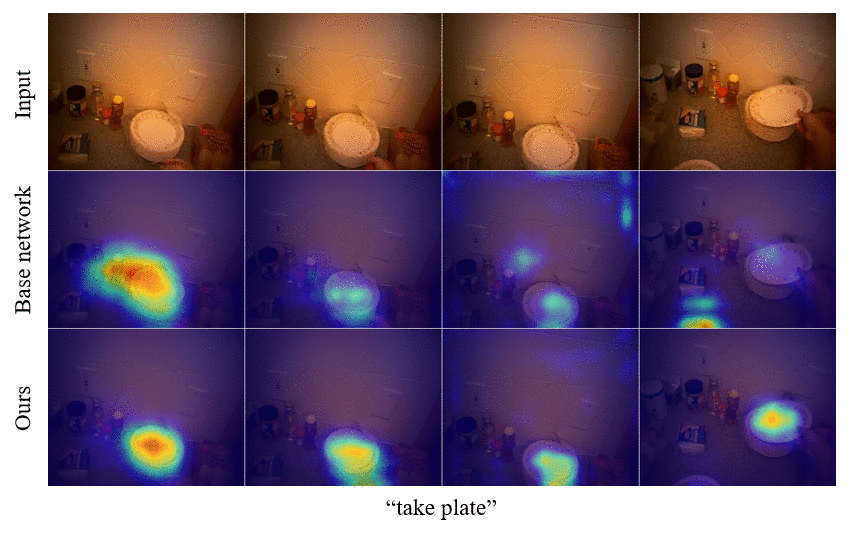Integrating Human Gaze into Attention for Egocentric Activity Recognition
It is well known that human gaze carries significant information about visual attention. However, there are three main difficulties in incorporating the gaze data in an attention mechanism of deep neural networks: 1) the gaze fixation points are likely to have measurement errors due to blinking and rapid eye movements; 2) it is unclear when and how much the gaze data is correlated with visual attention; and 3) gaze data is not always available in many real-world situations. In this work, we introduce an effective probabilistic approach to integrate human gaze into spatiotemporal attention for egocentric activity recognition. Specifically, we represent the locations of gaze fixation points as structured discrete latent variables to model their uncertainties. In addition, we model the distribution of gaze fixations using a variational method. The gaze distribution is learned during the training process so that the ground-truth annotations of gaze locations are no longer needed in testing situations since they are predicted from the learned gaze distribution. The predicted gaze locations are used to provide informative attentional cues to improve the recognition performance. Our method outperforms all the previous state-of-the-art approaches on EGTEA, which is a large-scale dataset for egocentric activity recognition provided with gaze measurements. We also perform an ablation study and qualitative analysis to demonstrate that our attention mechanism is effective.
PDF Abstract




 GTEA
GTEA
 EGTEA
EGTEA
